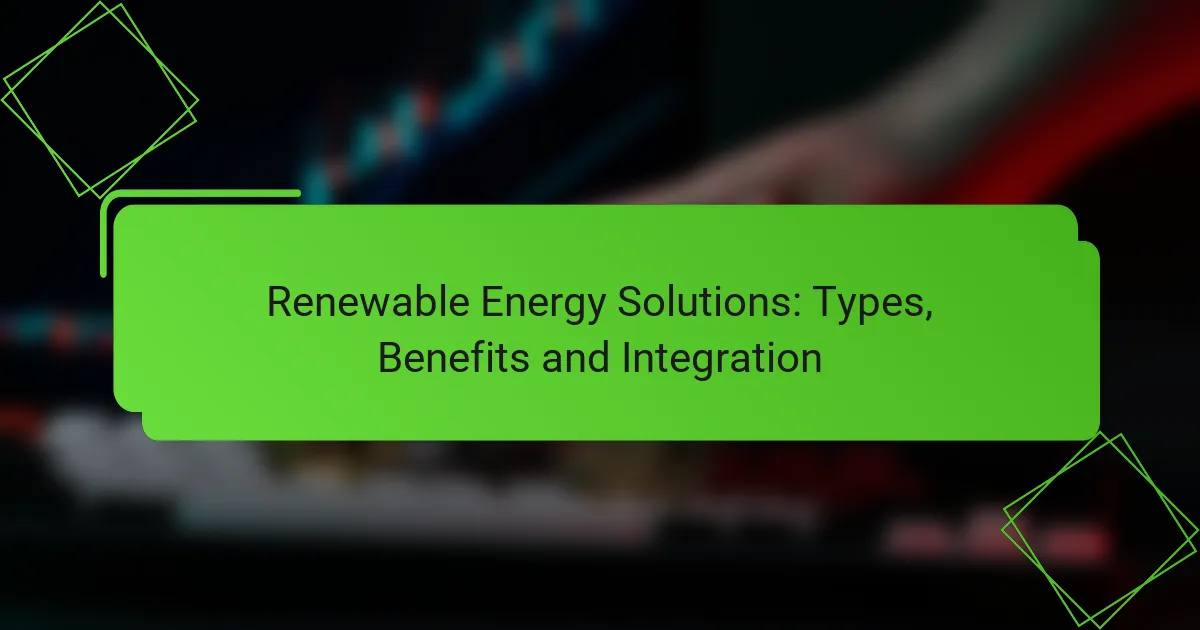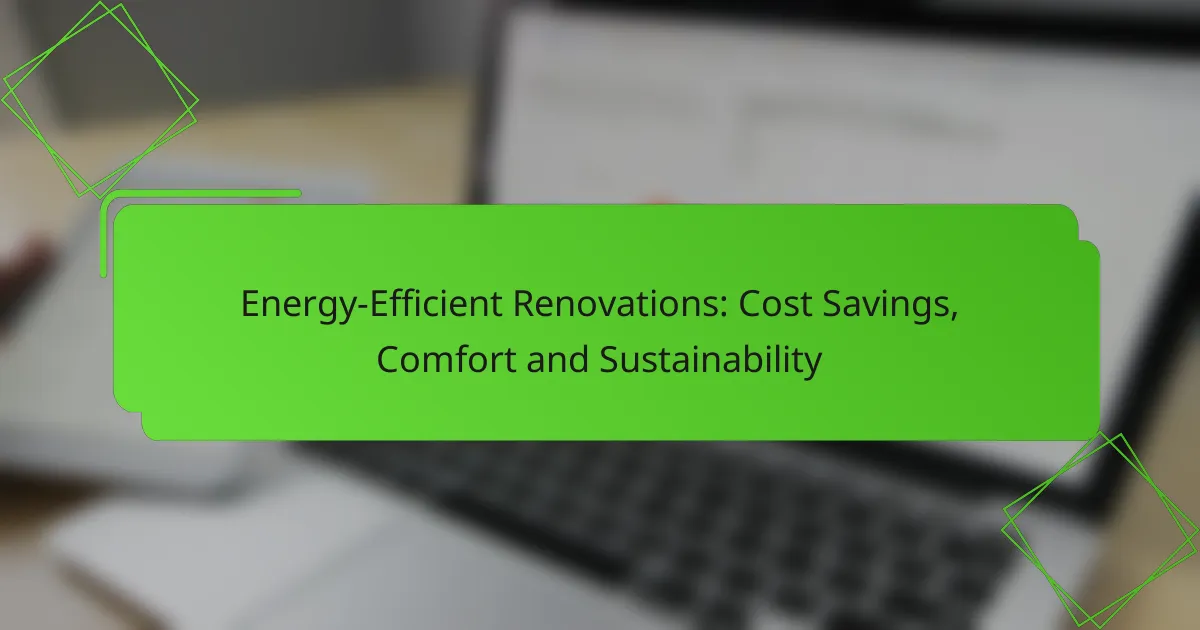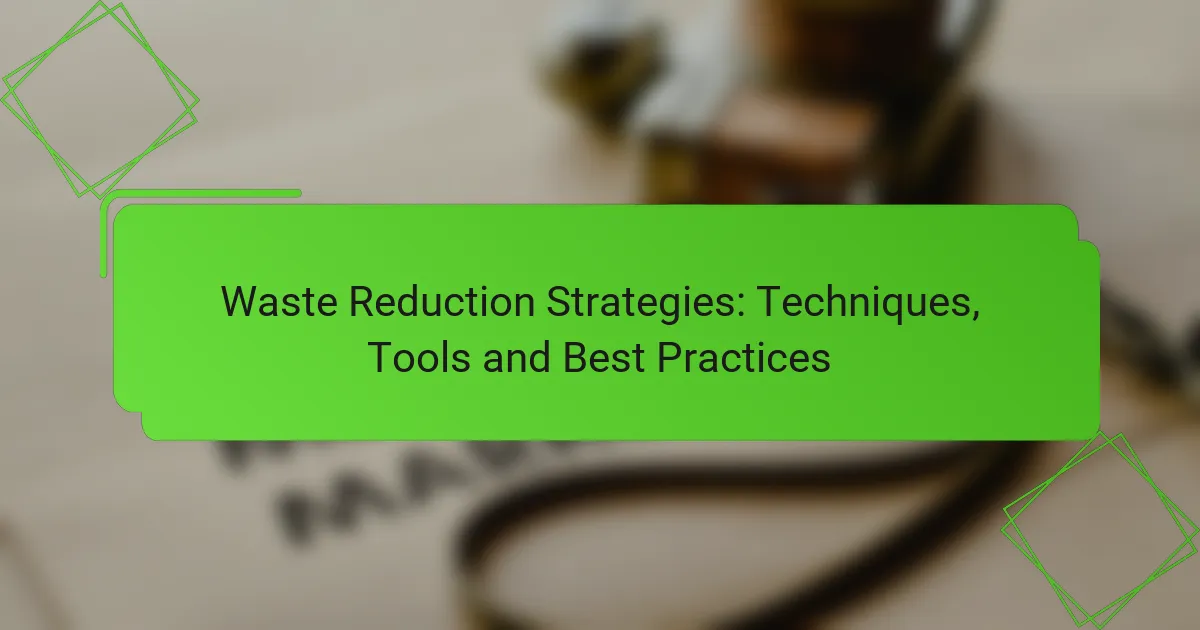Renewable energy solutions, such as solar, wind, hydropower, biomass, and geothermal systems, play a crucial role in promoting sustainability and reducing carbon emissions. These technologies not only contribute to environmental health but also foster economic growth and improve public well-being. By integrating renewable energy into homes and communities, individuals can lower energy costs while supporting a cleaner, more resilient energy future.
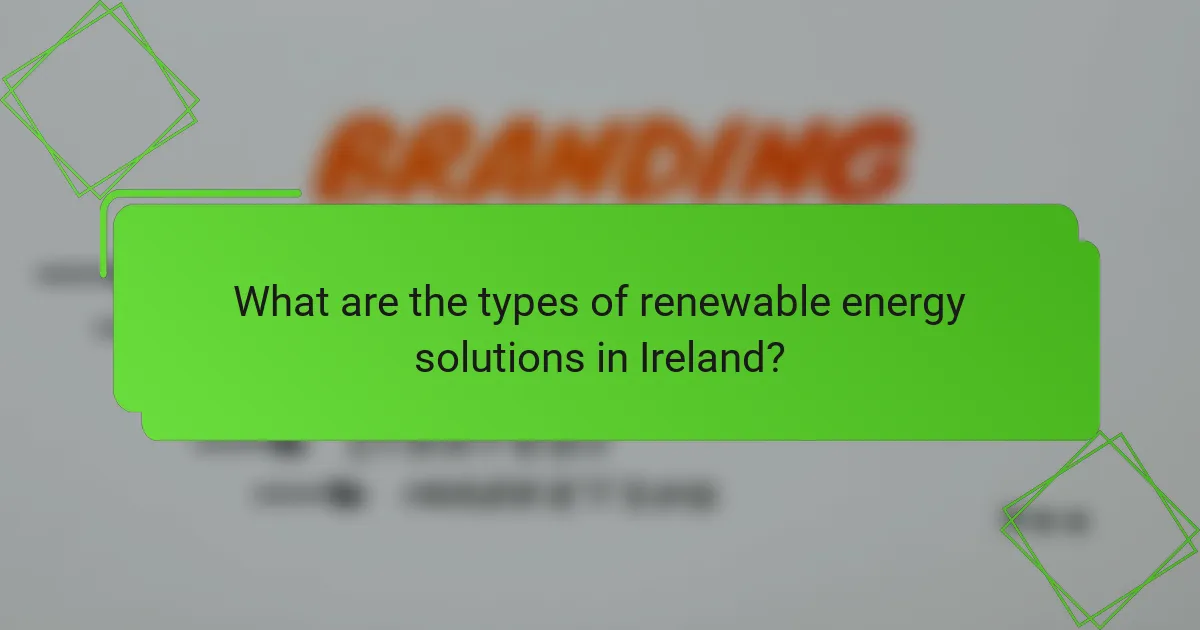
What are the types of renewable energy solutions in Ireland?
In Ireland, renewable energy solutions primarily include solar energy systems, wind energy farms, hydropower plants, biomass energy sources, and geothermal energy systems. Each type harnesses natural resources to generate energy sustainably, contributing to the country’s goal of reducing carbon emissions and enhancing energy security.
Solar energy systems
Solar energy systems in Ireland utilize photovoltaic (PV) panels to convert sunlight into electricity. These systems can be installed on rooftops or as ground-mounted arrays, making them versatile for residential and commercial applications.
When considering solar energy, it’s essential to assess the available sunlight in your area, as Ireland’s weather can be variable. Incentives such as grants and tax reliefs are available to encourage solar adoption, making it more financially feasible.
Wind energy farms
Wind energy farms are a significant source of renewable energy in Ireland, leveraging the country’s favorable wind conditions. These farms consist of multiple wind turbines that convert wind kinetic energy into electricity.
Investing in wind energy can yield substantial returns, as operational costs are relatively low once the infrastructure is established. However, it’s crucial to consider local regulations and community acceptance, as some projects may face opposition due to environmental concerns.
Hydropower plants
Hydropower plants generate electricity by harnessing the energy of flowing water. In Ireland, small-scale hydropower systems can be particularly effective in rural areas with suitable water resources.
While hydropower is a reliable energy source, potential environmental impacts on aquatic ecosystems must be carefully managed. It’s advisable to conduct thorough environmental assessments before proceeding with any hydropower project.
Biomass energy sources
Biomass energy sources involve using organic materials, such as wood, agricultural residues, and waste, to produce heat or electricity. This method can help reduce waste while providing a renewable energy source.
When utilizing biomass, it’s important to ensure sustainable sourcing of materials to avoid deforestation or depletion of resources. Additionally, local regulations may dictate how biomass can be used, so it’s essential to stay informed about compliance requirements.
Geothermal energy systems
Geothermal energy systems harness heat from the Earth’s interior to provide heating and electricity. In Ireland, this technology is still in its early stages but shows promise for sustainable energy generation.
Implementing geothermal systems can be capital-intensive, but they offer low operating costs and minimal environmental impact once established. Prospective users should evaluate the geological suitability of their location and consider potential government incentives for development.

What are the benefits of renewable energy solutions?
Renewable energy solutions offer numerous advantages, including environmental sustainability, economic growth, and enhanced public health. By transitioning to renewable sources, societies can reduce their reliance on fossil fuels and mitigate climate change impacts.
Reduction in carbon emissions
One of the primary benefits of renewable energy solutions is the significant reduction in carbon emissions. Unlike fossil fuels, renewable sources such as solar, wind, and hydroelectric power generate electricity without releasing greenhouse gases. This shift is crucial for meeting international climate targets and improving air quality.
For instance, transitioning to wind energy can reduce carbon emissions by over 40% compared to traditional coal power. This reduction not only helps combat climate change but also contributes to a healthier environment.
Energy independence
Renewable energy solutions enhance energy independence by reducing reliance on imported fossil fuels. Countries that invest in local renewable resources can produce their own energy, leading to greater energy security and stability. This independence can protect economies from volatile fossil fuel prices.
For example, nations like Denmark have successfully increased their energy independence by investing heavily in wind power, generating a significant portion of their electricity domestically. This strategy can be replicated in various regions, depending on local resources.
Job creation in green sectors
The renewable energy sector is a major driver of job creation, offering employment opportunities in manufacturing, installation, and maintenance. As the demand for renewable technologies grows, so does the need for a skilled workforce. This trend can lead to thousands of new jobs in local communities.
According to industry reports, the solar and wind sectors alone have created millions of jobs globally, with potential for continued growth as more countries commit to renewable energy initiatives. Investing in training programs can further enhance job prospects in these green sectors.
Long-term cost savings
Renewable energy solutions often lead to long-term cost savings for consumers and businesses. While initial investment costs can be high, the operational costs of renewable technologies are typically lower than fossil fuels. This is due to the decreasing costs of technology and the absence of fuel expenses.
For example, solar panel prices have dropped significantly over the past decade, making solar energy more accessible and affordable. Homeowners can save on electricity bills, while businesses can benefit from lower operational costs, resulting in improved profit margins.
Improved public health
Transitioning to renewable energy solutions can lead to improved public health outcomes by reducing air and water pollution associated with fossil fuel use. Cleaner air results in fewer respiratory and cardiovascular diseases, benefiting overall community health.
Studies have shown that areas that adopt renewable energy sources experience lower rates of health issues related to pollution. For instance, reducing coal usage can significantly decrease the incidence of asthma and other respiratory conditions, leading to healthier populations and reduced healthcare costs.
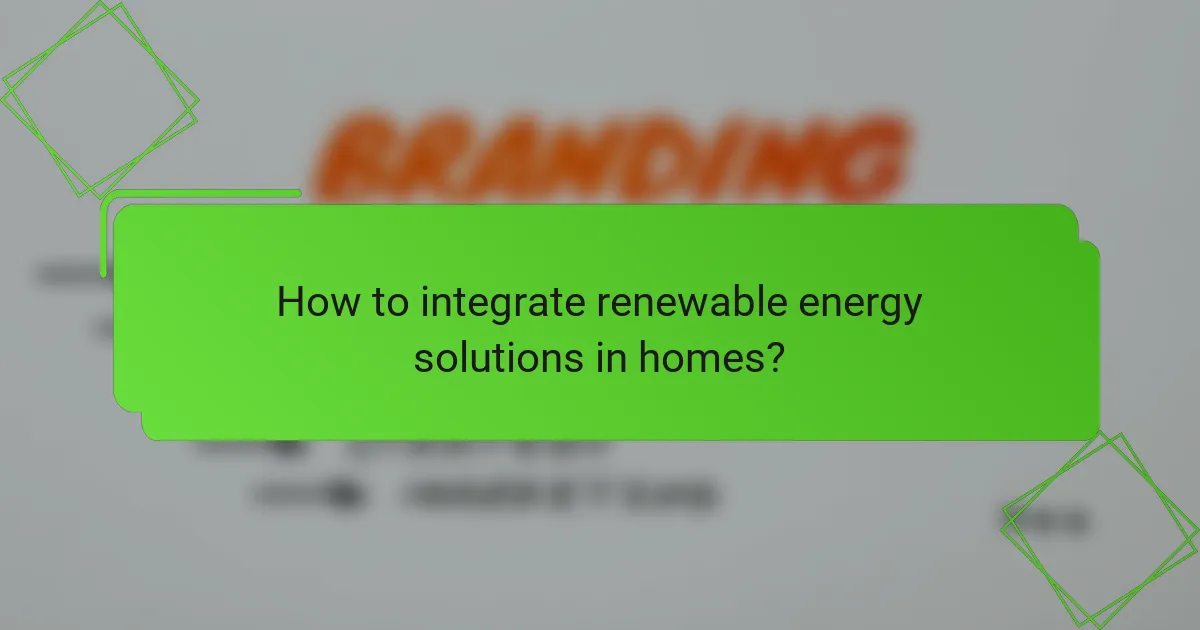
How to integrate renewable energy solutions in homes?
Integrating renewable energy solutions in homes involves assessing energy needs, selecting suitable technologies, and implementing systems that optimize energy use. This process can lead to reduced energy bills and a smaller carbon footprint.
Conducting energy audits
Energy audits are essential for understanding a home’s energy consumption patterns. They identify areas where energy is wasted and suggest improvements, such as insulation upgrades or more efficient appliances.
Homeowners can conduct a DIY audit or hire a professional. A typical audit may take a few hours and provide a detailed report on energy use, often highlighting potential savings of 10-30% on energy bills.
Choosing appropriate technologies
Selecting the right renewable energy technologies is crucial for effective integration. Options include solar panels, wind turbines, and geothermal systems, each with varying costs and benefits.
For instance, solar panels can be a great choice in sunny regions, while wind turbines may be more suitable in areas with consistent wind. Homeowners should consider local climate, installation costs, and available space when making their choice.
Utilizing government incentives
Many governments offer incentives to encourage the adoption of renewable energy solutions. These can include tax credits, rebates, or grants that significantly reduce upfront costs.
Homeowners should research local programs, as incentives can vary widely by region. For example, in the U.S., the federal solar tax credit allows homeowners to deduct a percentage of solar installation costs from their taxes, making it more affordable.
Installing smart energy management systems
Smart energy management systems help homeowners monitor and optimize their energy use. These systems can adjust energy consumption based on real-time data, leading to increased efficiency and savings.
Examples include smart thermostats, energy monitoring apps, and automated lighting systems. Investing in these technologies can enhance the benefits of renewable energy solutions by ensuring that energy is used wisely and efficiently.
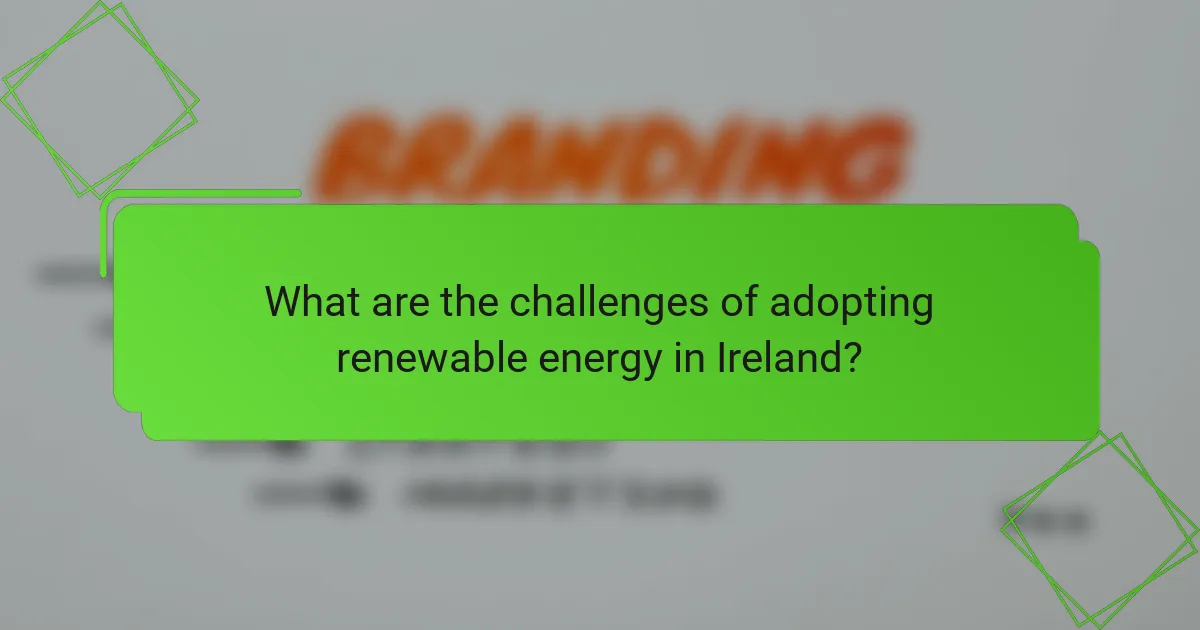
What are the challenges of adopting renewable energy in Ireland?
The adoption of renewable energy in Ireland faces several significant challenges, including high initial investment costs, the intermittency of energy sources, regulatory hurdles, and public acceptance issues. Addressing these challenges is crucial for a successful transition to a more sustainable energy system.
High initial investment costs
One of the primary barriers to renewable energy adoption in Ireland is the high initial investment required for technologies like solar panels and wind turbines. These costs can range from tens of thousands to millions of euros, depending on the scale of the project. While long-term savings on energy bills can offset these costs, the upfront financial burden can deter many potential investors.
To mitigate these costs, stakeholders can explore financing options such as government grants, subsidies, or low-interest loans. Engaging with local financial institutions that understand renewable energy financing can also provide valuable support.
Intermittency of energy sources
Renewable energy sources, such as solar and wind, are inherently intermittent, meaning they do not produce energy consistently throughout the day or year. This variability can lead to challenges in maintaining a stable energy supply. For instance, solar energy is less effective on cloudy days, while wind energy depends on weather conditions.
To address intermittency, Ireland can invest in energy storage solutions, such as batteries or pumped hydro storage, which can store excess energy generated during peak production times. Additionally, diversifying the energy mix with complementary sources can help balance supply and demand.
Regulatory hurdles
Navigating the regulatory landscape is another challenge for renewable energy projects in Ireland. Complex permitting processes and compliance with local and national regulations can delay project timelines and increase costs. Understanding the specific requirements for renewable energy installations is essential for developers.
Engaging with regulatory bodies early in the project planning phase can help streamline the approval process. Staying informed about changes in regulations and policies can also aid in anticipating potential hurdles and adapting strategies accordingly.
Public acceptance issues
Public acceptance plays a crucial role in the successful implementation of renewable energy projects. Local communities may have concerns about the visual impact, noise, or environmental effects of renewable installations. These concerns can lead to opposition and delays in project development.
To foster public acceptance, developers should prioritize community engagement by providing transparent information about the benefits and impacts of renewable energy projects. Hosting public consultations and addressing community concerns can build trust and support for renewable initiatives.
